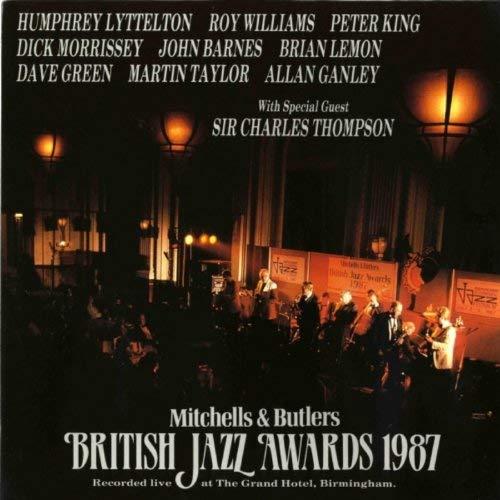POTATO HEAD JAZZ BAND: STOMPIN’ AROUND Straight-ahead swinging Dixieland is not a music form normally associated with Southern Spain, but…
VARIOUS ARTISTS: JAZZ CITY UK VOLUME 2 Catalogue number BEARCD57 “This is probably as close as we’ll ever get to…
VARIOUS ARTISTS: JAZZ CITY UK Catalogue number BEARCD56 Having hosted a major international Jazz Festival for 33 years, and still…
LAUGHING AT LIFE Catalogue number BEARCD54 Billie Holiday’s life-story, as it has been told and retold over the…
REMI HARRIS: NINICK Catalogue number BEARCD53 You only have to hear a few bars from one of…
NOMY ROSENBERG TRIO Catalogue number BEARCD49 Nomy Rosenberg is the heir to a tradition many times older than…
DJANGO’S CASTLE WITH BRUCE ADAMS: SWING HOTEL DU VIN Catalogue number BEARCD48 In the fifty-five years since his…
THE MARBELLA JAZZ SUITE Catalogue number BEARCD44 The jazz festivals of Marbella in Spain and Birmingham in England formed a…
BRUCE ADAMS – ADAM BARNES QUINTET: LET’S FACE THE MUSIC Catalogue number BEARCD40 I still get a little shock of…
KENNY BAKER’S DOZEN: THE BOSS IS HOME Catalogue number BEARCD39 Track Listing: Swinging The Blues Stumbling Street of Dreams…
BRUCE ADAMS/ALAN BARNES QUARTET: SIDE-STEPPIN’ Catalogue number BEARCD38 I still get a little shock of surprise and delight whenever I…
BRUCE ADAMS QUARTET: ONE FOOT IN THE GUTTER Catalogue number BEARCD36 Bruce Adams is a masterly trumpet player in the…
DUNCAN SWIFT: THE BROADWOOD CONCERT Catalogue number BEARCD34 Listeners to this album, recorded live at The Grand Hotel, Birmingham on…
LADY SINGS THE BLUES Catalogue number BEARCD33 What the album tries to do is to evoke the feeling, not the…
BILL ALLRED’S GOODTIME JAZZ BAND: SWING THAT MUSIC Catalogue number BEARCD31 Lend an ear to Bill Allred’s Goodtime Jazz Band…
OUT LOOKING FOR THE LION: DUNCAN SWIFT Catalogue number BEAR28 Track listing: Carolina Shout Lullaby of the Leaves Honey Babe…
Groove Juice Comin’ To Town: Groove Juice Special Catalogue number BEARCD29 Track listing: Groove Juice Comin’ To Town A Porter’s…
BRITISH JAZZ AWARDS 1987: VARIOUS ARTISTS Catalogue number BEAR27 Musicians Featured: Humphrey Lyttelton – Trumpet Roy Williams – Trombone Peter…
THE M&B JAM SESSION 1984: VARIOUS ARTISTS Catalogue number BEAR26 Recorded live at Birmingham’s Cannon Hill Park in 1984, described…
KANSAS CITY GIANTS: CLAUDE WILLIAMS Catalogue number BEAR25 Track listing: One for the Count Kansas City The Fiddler Teach me…



















